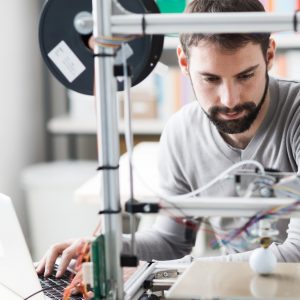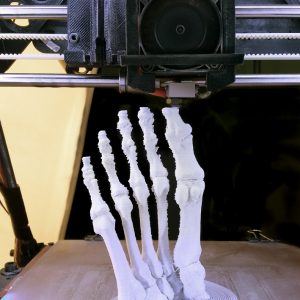In 2015, Gartner, a popular market research firm, predicted that medical 3D printing would turn out to be the trailblazer that would eventually establish additive manufacturing over the next two to four years. Now, four years have gone by after the prediction had been made and experts have decided to explore and scrutinize the potential of the industry in order to find out whether the prediction has actually proved to be true.
Can 3D Printing Be Optimally Used In The Medical Sector?

Even though 3D printing first came into being in 1984, it’s only recently that a few start-ups started to conduct experiments and probe into the technology. Aside from them, medical science firms have also tried to seek out the ways to utilize 3D printers to reduce health care expenditures for injured or sick patients. Although the progress in the medical field, as far as 3D printing technology is concerned, has been average till now, utilizing it to solve all kinds of medical complications would certainly be a dream come true.
Can 3D Printing Be Used To Advance Surgical Procedures?

The U.S. Food & Drug Administration recently revealed that 3D printers are being utilized to manufacture certain surgical devices and medical equipment that can cater to a patient’s unique body type or anatomy. By coming up with specialized equipment, doctors would find it easy addressing the unique needs of different patients in a much more efficient way. Currently, 3D printing is already in use for setting up complex surgical devices at a cost that’s lower than those which are built using conventional procedures. The ever-increasing medical expenses in the United States would automatically be curbed down if the technology is deployed strategically.
3D Printing Is Being Used To Build Body Parts

Top manufacturers around the world are using disruptive technologies to build products that are in demand, and that, too, in real time. Innovations in the sphere of 3D printing have started gaining ground and have been attributed for recent success. Since 2014, 3D printing procedures are being utilized to create shoes, t-shirts, and jewelry as well. Most people have no knowledge about how the healthcare sector is also benefiting from the 3D printing methods as the top prosthetics manufacturers are now using the technology to create body parts for a number of patients. Well-known medical firms are even using 3D printing procedures to create new skin for victims suffering from burns. Additionally, babies and toddlers who have respiratory problems are benefiting from the airway splint implants.
Can Complex Implants Be Manufactured Using Medical 3D Printing Technology?

As technology continues to evolve, doctors and experts have already started planning to utilize 3D printing to generate complex implants for patients suffering from various ailments. Aside from that, medical scientists are also trying to create new eyes, noses, legs, hands, and feet. The possibilities of utilizing this technology to bring a change in various cosmetic surgical methods are being explored. To cite an example, Princeton University experts are on their way to generate a ‘bionic’ ear that would have the ability to pick out radio frequencies that are inaudible to the human ear.
The Future Looks Bright

Although it will take a lot of time to create genuine new body parts and organs using 3D printing methods, the technology would surely keep on evolving and developing over the years and completely disrupt the sector in a positive way in the days to come. 3D printing is bound to have huge effects on other industries as well. It’s intriguing to think that an organ can be generated using 3D printing methods without having the patient wait for months or even years for a donor.
As per Gartner’s prediction, medical 3D printing is more or less moving alongside the curve. A day would arrive when patients would be able to lay their hands on several devices that would suit their needs and then it can be said that 3D printing has revolutionized human life. As of now, the technology is in a nascent stage. However, the future looks absolutely promising as leading medical research firms are coming up with innovative solutions almost every day. The way scientists around the world are making progress, we will likely see medically 3D printing entering the mainstream a few years down the line.





